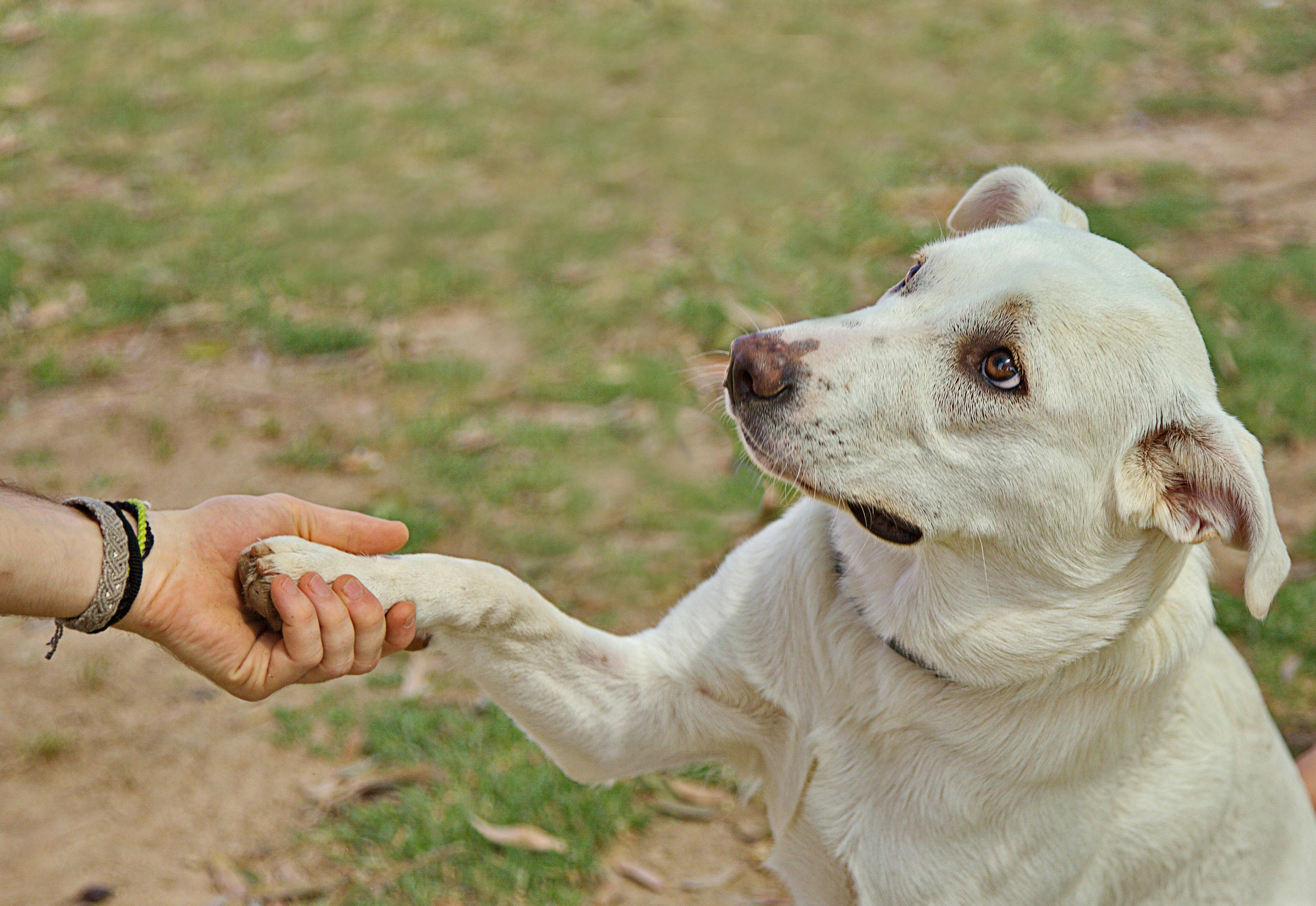Hand Shy, Head Shy – 7 Steps to Help Your Dog Overcome This Behavior

Many dogs, most often puppies that have not been handled by the breeder, or animals that have been abused or rescued from shelters, get out of hand. This is especially true of a hand going to your face or going over your head. Unfortunately, they can’t tell you what negative experience they had with human hands. Many perceive this action as a threat. Usually some form of abuse, lack of socialization, or neglect is the cause of this heartbreaking behavior. Never pick up a dog with this behavior problem. It can make them more apprehensive and/or possibly aggressive! Fearful dogs can be dangerous dogs. Be patient. You can help them overcome this fear and make a positive association with your hand.
What you can do to help your dog overcome hand shyness:
1. When approaching your dog, approach slowly and at a slight angle. Approaching at an angle, it won’t appear as big and threatening as if it were approaching head-on. You can also squat or kneel so as not to project a threat.
2. SLOWLY reach out and pat your dog under the chin, keeping your hand in view. Avoid “jerky” movements with your arms. Speak softly and calmly. Praise him for letting you touch him. If they accept it, reward them with a treat.
3. Enroll your dog in obedience classes as soon as possible. Find a local coach who practices non-punishment, positive reinforcement methods. Work on verbal corrections, a calm tone of voice, and non-threatening body language, rather than physical corrections.
4. Work on remembering, so you don’t have to grab it. Welcome, call your dog by his name and say: “COME!” Praise and reward him when he comes to you. Rub it under the chin. For some dogs, it helps if they squat or kneel when called.
5. Practice positive reinforcement. Reward your dog with plenty of praise and gently pet him under the chin. Reinforce his happiness by speaking in a soft, calm tone of voice to show him that he is satisfied with his behavior.
6. Give your dog massages as often as you can. Work the whole body, but focus on the head and neck area. Talk softly to them during the massage. The more you do this, the more confident and relaxed they will become. Through this positive experience, they will learn to associate your hand as loving and good.
7. Let family and friends know what you are trying to do. Instruct them in the proper way to approach and pet your dog. Don’t hesitate to correct them immediately, if they are doing it incorrectly.
Conclusion: Your dog needs to make the association of human hands non-threatening. The more caring hands associated with a positive experience your dog feels, the sooner they will welcome it. As your dog becomes more relaxed around you, your family, and friends, start taking him to places where there are new people to meet. Explain to them what the problem is that you are working on and ask them to approach your dog. They can start by simply giving the dog a treat or toy. As your dog becomes more comfortable accepting treats or toys from strangers; Calm down for you to pet your dog under the chin, then reward the dog with a treat or toy. This way your dog will associate human hands with a loving, gentle touch and other good things. Be patient, calm and constant. Over time, you will see a more confident dog that welcomes human contact.